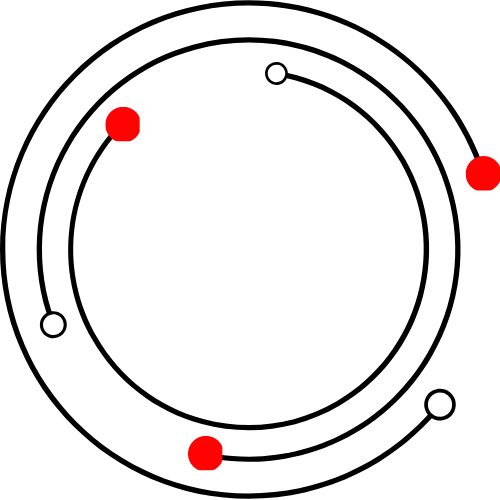7 Sales Forecasting Techniques for Accurate Predictions
Sales forecasting is a critical aspect of driving business success, yet finding the right technique can often feel like searching for a needle in a haystack. This article uncovers proven methods that professionals swear by, beginning with the analysis of past sales data and concluding with the examination of sales pipelines and conversion rates. With a total of seven insightful techniques, each method is dissected to understand its unique effectiveness. Prepare to explore the strategies that have consistently yielded accurate predictions for businesses.
- Analyze Past Sales Data
- Review Historical Sales and Seasonal Trends
- Use Predictive Analytics Models
- Conduct Market Research and Competitive Analysis
- Incorporate Economic Indicators and Industry Benchmarks
- Leverage Machine Learning Algorithms
- Analyze Sales Pipeline and Conversion Rates
Analyze Past Sales Data
One sales-forecasting technique I rely on is analyzing past sales data to spot patterns. For example, I noticed that certain product lines consistently perform better during specific months. Using this insight, we adjust our strategies and prepare accordingly. This works well because it's grounded in real numbers, not guesswork, and helps us make practical decisions.

Review Historical Sales and Seasonal Trends
One sales-forecasting technique that has worked wonders for my floral business is analyzing historical sales data alongside seasonal trends. Each year, I carefully review sales figures from previous years, paying close attention to busy periods like Valentine's Day, Mother's Day, and holiday seasons. By understanding these patterns, I can accurately predict how much inventory I need for upcoming events, and avoid running out of popular items.
What makes this technique effective is its reliance on real data rather than guesswork. I also keep an eye on local events and holidays, adjusting my forecasts accordingly. For instance, if I know a local school is hosting a graduation ceremony, I can anticipate an uptick in orders for celebratory arrangements. This proactive approach helps me stay ahead of demand and ensures I have enough stock to meet customer needs.
Additionally, I communicate these forecasts with my team, so everyone is aligned on expectations. We discuss potential challenges, like supply-chain issues, and develop contingency plans to address them. This collaborative approach not only enhances our sales performance but also fosters a sense of teamwork and accountability among staff.

Use Predictive Analytics Models
Using predictive analytics models allows businesses to dig deep into historical data and uncover patterns and trends that can guide future sales projections. This method involves analyzing large datasets to identify influential factors that drive sales performance. These insights help decision-makers set realistic targets and allocate resources more efficiently.
Predictive analytics also enables companies to spot potential risks and opportunities ahead of time. To achieve better sales results, businesses should invest in advanced analytics tools and skills.
Conduct Market Research and Competitive Analysis
Market research and competitive analysis provide essential information about customer behavior and market trends. By understanding what competitors are doing and how the market is moving, businesses can make informed decisions about their selling strategies. Competitive analysis uncovers strengths and weaknesses relative to competitors and helps in adjusting tactics accordingly.
This proactive approach ensures that businesses stay relevant and responsive to market changes. Embrace comprehensive market research to stay ahead in the competitive landscape.
Incorporate Economic Indicators and Industry Benchmarks
Incorporating economic indicators and industry benchmarks into sales forecasting is critical for aligning business strategies with macroeconomic conditions. Economic indicators such as GDP growth, unemployment rates, and consumer confidence can influence sales performance significantly. Industry benchmarks provide a standard against which a company's performance can be measured.
By understanding economic trends and industry standards, businesses can set achievable goals and adjust their forecasts based on real-world conditions. Consider these broader factors to refine your sales forecasting methods.
Leverage Machine Learning Algorithms
Machine learning algorithms offer the capability to handle complex and dynamic datasets for more accurate forecasting. These algorithms learn from historical data and adjust predictions as new data becomes available, ensuring that forecasts are always up-to-date. Machine learning models can account for a wide range of variables and interactions that traditional models might miss.
This technology-driven approach provides a deeper and more nuanced understanding of future sales trends. Leverage machine learning for more precise and adaptable sales predictions.
Analyze Sales Pipeline and Conversion Rates
Analyzing the sales pipeline and lead conversion rates is fundamental for assessing future sales potential. This technique involves examining each stage of the sales process to identify where leads turn into customers and where they drop off. It provides insights into the efficiency and effectiveness of the sales funnel, helping businesses to identify and address bottlenecks.
By monitoring conversion rates, companies can optimize their sales strategies and predict revenue more accurately. Focus on refining your sales pipeline for better forecasting accuracy.

